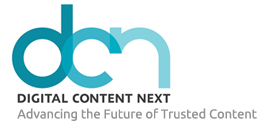While the cryptocurrency market has been growing at a steady rate over the past few years, it has recently exploded – and shows no signs of slowing down. Estimates show the industry will hit $4.94 billion globally by 2030. That’s more than triple its size of $1.49 billion in 2020.
With such a large market, it’s a no-brainer for advertisers whether they be crypto platforms, providers or innovative merchants – to take advantage. There may be no bigger sign that the door is wide open than the fact that Google, just this summer, loosened restrictions on crypto ads after banning them in 2018. As money flows into the category and advertising becomes more accepted and possible, it presents a big opportunity for publishers to capitalize on a growing and lucrative ad market.
Meet the crypto advertisers
According to our own data at MediaRadar, we’re seeing that bear out. In 2020, there were just 27 digital currency companies who purchased ad digital display or print ad space. In 2021 that number increased 159%. New companies include BitYard, Anatha, BitTrust IRA, Phemex Limited, and Gemini. Existing advertisers, like Coin Mobile App, Hex.com, Bakkt Marketplace, Nexo, and Celsius Network, continue to spend. This growth will only continue and to the benefit of the overall ad ecosystem.
Supporting the industry is the increased credibility it has seen in recent years. We know Google has shifted its view on it, but it’s not the only major company.
Tesla invested $1.5 billion in Bitcoin back in February, and that caused the cryptocurrency market cap to surpass Google’s stock. Tesla founder Elon Musk has always been a crypto advocate – despite brief moments of doubt. In fact, his backing of certain currencies has caused them to skyrocket.
Breakthrough business
Beyond bleeding edge players like Tesla and Musk, legacy businesses like McDonald’s are now accepting crypto for payment. So, there’s a more accepting audience for crypto ads. And, with all the different cryptocurrency formats out there, it’s easy for advertisers to try and market one people haven’t tried yet. The same goes for crypto platforms.
However, in such a crowded market, how do crypto brands break through? What are advertisers doing to market crypto to the public, especially when there are plenty of people who still don’t know what crypto is or how it works? And what types of publishers are benefitting?
This year, crypto companies advertised across digital and print formats, with most spent on digital (86%). However, 14% of spend has been in print. In 2020, there was no investment in print, which marks a substantial year-to-year change.
This indicates that the industry is growing and is striving to reach a broader demographic by advertising in The Economist, Bloomberg Businessweek, Car and Driver, and The Globe and Mail. Note, of course, the audiences of these publications. They’re often more business and tech-savvy. Also, they likely follow the crypto category or are more receptive to trading crypto than the average person. Publishers that feature these audiences can win ad dollars from the growing number of crypto brands eager to invest.
Follow the money
Still, while crypto is beginning to mainstream and broaden its outreach, crypto advertisers haven’t shifted to the ultimate mass marketing channel – linear TV. There has been some experimentation, of course. However, according to our research, TV was the least popular channel for cryptocurrency companies. In comparison, the majority of advertising spend from traditional banking services in 2020 and 2021 – think Capital One, Chase Freedom, Chime Bank, and CitiBank – has been on TV ads.
Beyond the channel, the format in which crypto brands deliver their message is similarly important. One way to engage their audience effectively is with contextualized messaging. According to BuySellAds, “those in the cryptocurrency industry are more likely to engage with advertising from contextual advertising networks that display contextualized messaging and is relevant to what they’re viewing, is honest, and doesn’t utilize forms of tracking.” The best crypto ads are native and tightly aligned to the format and content. For publishers seeking to partner with cryptocurrency brands, this is critical intelligence when pitching formats and capabilities.
Moving forward, enterprising publishers can take advantage of the crypto ad explosion. With a growing number of competitors, platforms and players, there is a massive opportunity here to build business and grow revenue.















